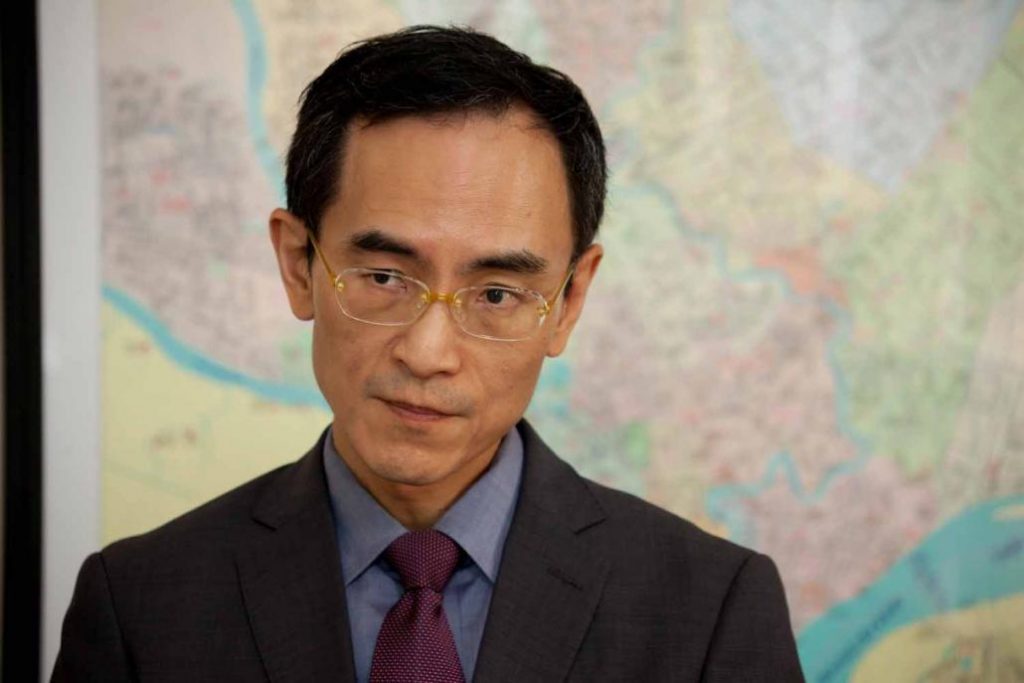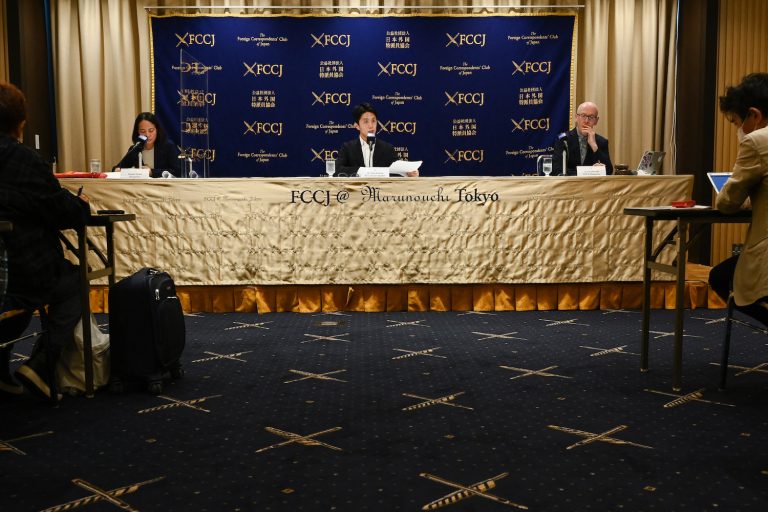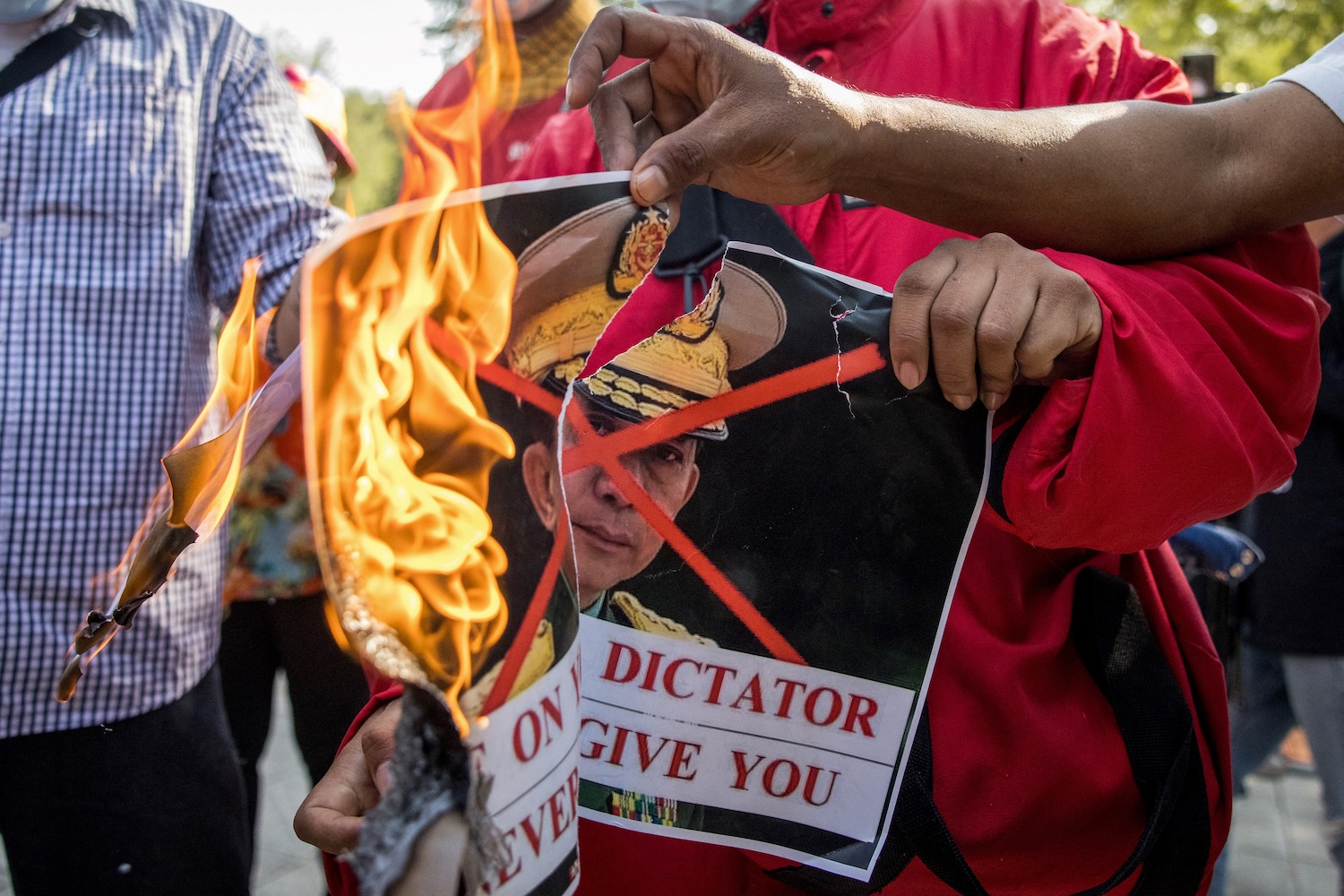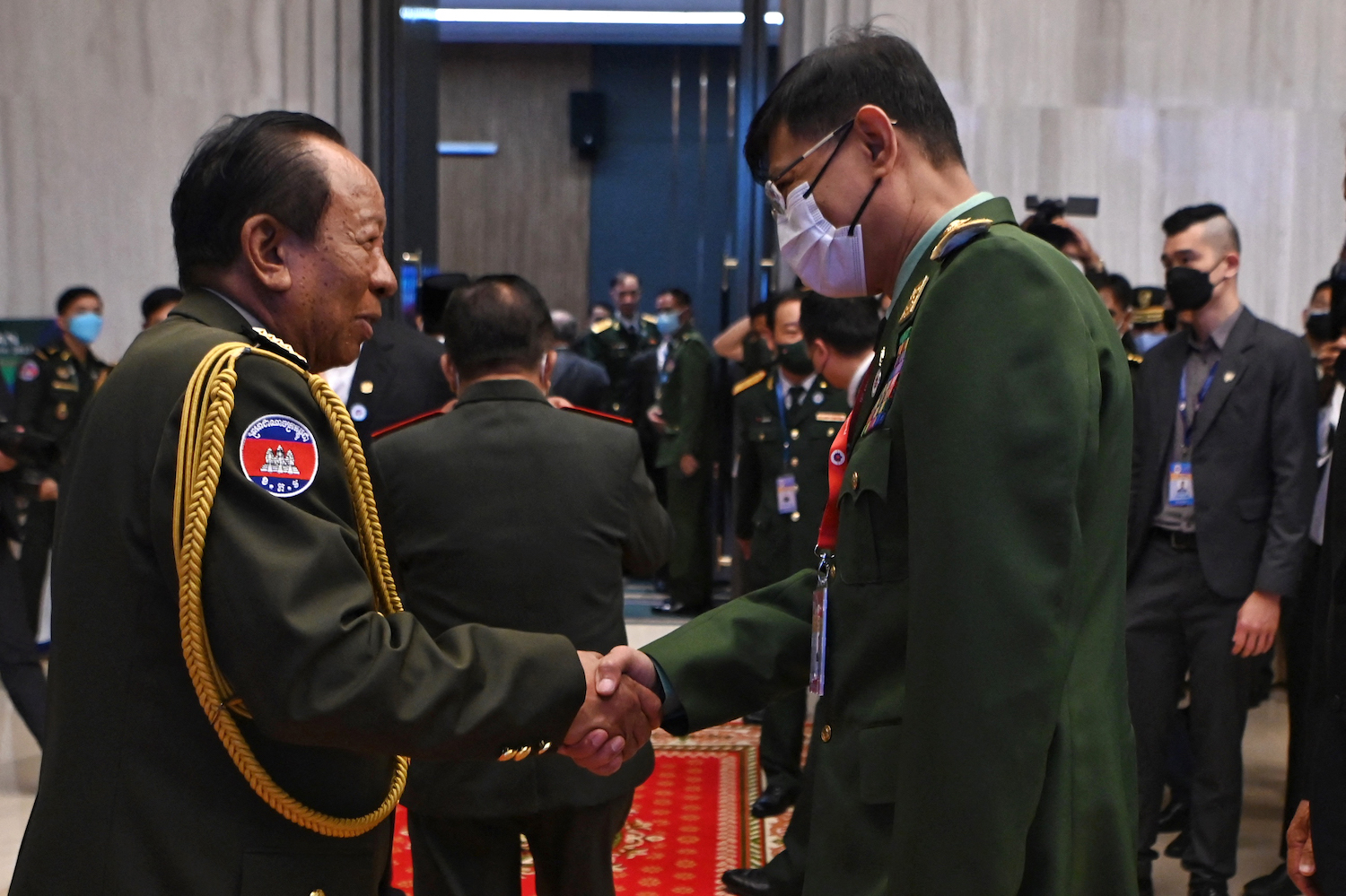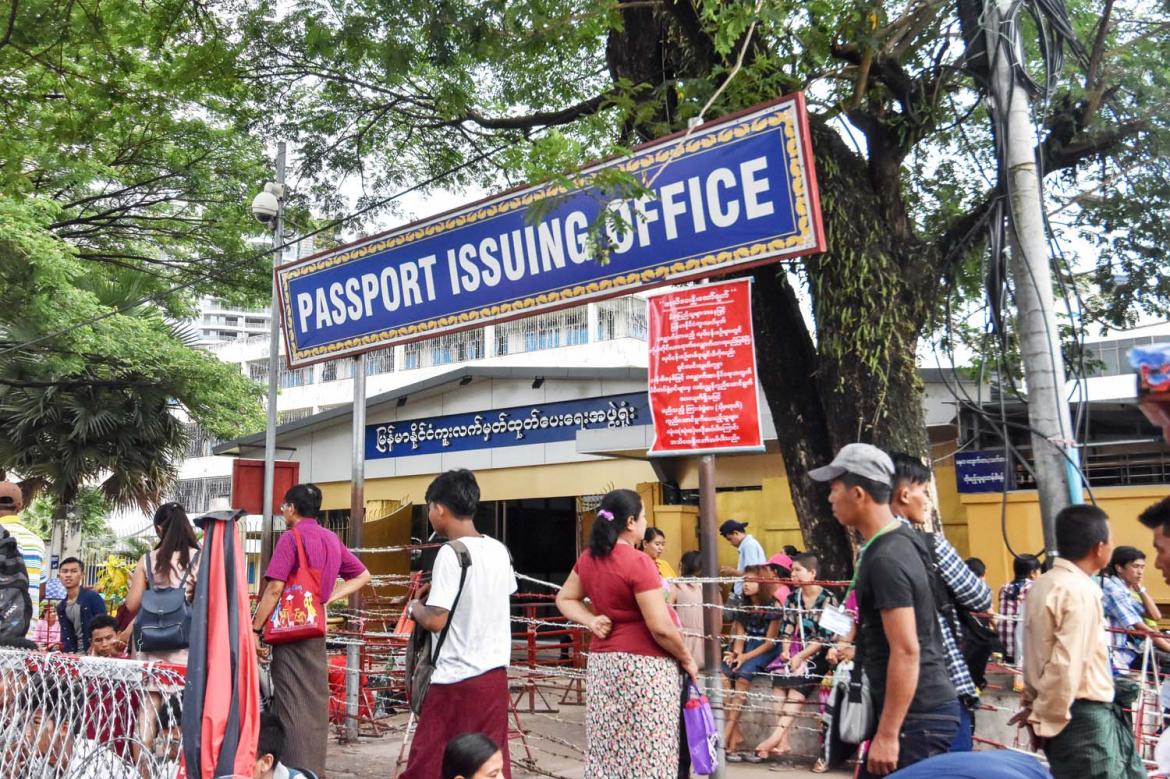Since the NLD government took office, Japan has promised billions in aid and investment, much of which will be administered through its development aid arm, the Japan International Cooperation Agency. The agency’s chief representative in Myanmar, Keiichiro Nakazawa, spoke to Frontier’s Thomas Kean about the government’s donor coordination efforts, the next phase of the Thilawa Special Economic Zone and plans for a new port and airport in southern Yangon.
What is your assessment of the new government’s performance since it took office, and how at all has it affected your activities?
We really welcome the new government which was elected by the people [and] we are very much also excited, like the Myanmar people, to assist what the new government is doing in this country for sustainable development and for poverty reduction.
We have been talking with key NLD committees, such as the economic committee, since the election, and after the new government was formed at the end of March we have been discussing with various union government ministers as well as some region and state government as to what JICA can contribute.
How is the current government different to work with as compared to the U Thein Sein administration?
I think since this new government was elected through an election that everyone has shown was very fair, the new government was very much caring about the people’s voice and trying to be inclusive for making decision or for making development planning. We are also trying to be inclusive and hear the people’s voice.
Parliament recently approved a government request to borrow 94 billion yen (about US$800 million) from JICA. Can you explain some of the key elements of that loan package?
There are five projects that parliament approved [in mid-December].
Support more independent journalism like this. Sign up to be a Frontier member.
One of the projects is Yangon’s water supply project. In fact we have contributed to Yangon water supply for quite some time, utilising our grant assistance. The new loan approved in this sector is to provide water to the western part of Yangon and also the central business district by constructing a new treatment plant at Kokkowa in the western part of Yangon.
jtms-jica1.jpg

Keiichiro Nakazawa, chief representative of the Japan International Cooperation Agency’s Myanmar office. (Theint Mon Soe — J / Frontier)
[Another] of the big projects approved by the parliament was the Yangon-Mandalay railway improvement project. This will be the second loan under this Yangon-Mandalay railway improvement project … [the railway] could be the backbone of the country because it will connect two big cities, Yangon and Mandalay, through the capital, Nay Pyi Taw.
Your government has also said it is preparing a larger 800 billion yen support package to Myanmar. How much of that will be administered by JICA, and what type of projects can we expect?
It’s difficult to say how much of this support that the Japanese prime minister [Mr Shinzo Abe] committed when he met with State Counsellor Daw Aung San Suu Kyi in Japan because it includes both public ODA-type assistance as well as private investment.
At this moment it’s not easy to say what are the contents of such assistance because it depends on the needs of this country.
Looking at the establishment of DACU [Development Assistance Coordination Unit], which the state counsellor chairs, … I think they will make a development policy and [specify] what kind of development aid they want from Japan … using the 800 billion yen of support which the Japanese government announced.
It seems that the current government is taking a very different approach to its predecessor on foreign aid – being more discriminate and careful about it accepts. Do you agree with that, and do you sense any reluctance from the government about being seen as reliant on foreign support?
I think financial discipline might be stronger in the current government as compared to previous ones. If we look at the manifesto, which NLD published before the election, the financial discipline was clearly mentioned there and also the current government is very caring about the macroeconomic conditions.
I understand that the International Monetary Fund, for example, suggested the fiscal deficit to be less than 4.5 percent of GDP and the government is now caring about such indicators. So I think that is a very good thing in order for the macro-economy to be very sound, which is key for economic growth and encouraging foreign direct investment.
And also there are many good discussions in the parliament when they discuss foreign aid. Since they [lawmakers] are representing the people of this country, I think such active discussions or participation when they decide whether to receive foreign assistance is very much necessary.
On the topic of Yangon urban development, you’re working on a review of the Yangon 2040 plan. Why was that update needed?
We are now working with Yangon Region government and other union ministries on two master plans in Yangon. One, which we call the Strategic Urban Development Plan in Yangon, takes care of urban development by suggesting future vision of Yangon and taking into account the population growth over the next couple of decades.
We also suggest some new town developments, for example, or to disperse the very concentrated central business discrict function to other sub-centres in the Yangon area.
The other master plan we are now working with Yangon Region government and others is about urban transportation. After we assisted to make these two master plans in 2013-14, conditions of the town have been rapidly changed. For example, the number of cars increased more than people expected three or four years ago.
Traffic jams because of increased cars became worse. Several other factors emerged as well, because of the forming of the new government the policy of the government has also been changing.
dsc_4265.jpg

At the request of the regional government, JICA is reviewing a transport master plan for Yangon that it drafted in 2013-14. (Theint Moe Soe — J / Frontier)
There are several important changes. We recommend some sub-centres in the city as well as some new towns taking into account the population increase over the next two or so decades that planning be more concrete as compared with the previous plan.
Also the Yangon Region government have an intention to develop not only the central part of Yangon but also over the river so we are also working with them how we can develop other areas over the river, the southern area for example.
When can we expect those updates to be completed?
We are almost in final stage of development but I understand, based upon the discussion with the government, [that] after we submit our report, I think the Yangon region government will discuss the master plan with the people as well as with the parliament, so it may take some more time. But that kind of inclusive discussion and participation of the people and people’s representatives is very important.
You mentioned the importance of consultation. One of the criticisms of JICA’s work is that in the past there wasn’t a lot of consultation with the public. How would you respond to that?
I don’t think that our work is very much done in a closed manner but the owner of this type of study is definitely the government. Probably after making some good discussions with the government, when the government becomes ready they will make it ready to hear public opinion and comments or make a discussion in the parliament which are representing the people.
Please do not misunderstand that these master plans are the products of JICA or JICA’s consultants. We are assisting the government to make the master plan and they are the owner to make it available to the public and for public discussion.
The government recently announced that it planned to build a new port in southern Yangon, near Kungyangon. It was also reported as saying that it would build a new airport there rather than the previously approved one at Hanthawaddy. Has JICA been involved in those discussions and does it support that plan?
I know those ideas to construct a deep-sea port in the southern part of Yangon … and also an airport. But I also understand it’s a future plan and not an immediate type of plan. More detailed discussions may be needed in the future.
There is Yangon port, which is already in operation, and JICA is now assisting the new Thilawa port, which will become a key port for Thilawa SEZ for export and import. I think the short-term plans need to put more importance on speeding up those constructions.
As for the airport, I’m travelling to Nay Pyi Taw nearly every week and whenever I go to Yangon International Airport I find something new is under construction. Now the new domestic terminal has opened in addition to the new international terminal, and the capacity is also increasing.
Hanthawaddy Airport in the Bago area is also very much a candidate for the new airport and in fact JICA is assisting some private companies’ consortium to study the feasibility of the Hanthawaddy Airport, which I believe is also a very important project.
Thilawa is obviously an important project for JICA, which holds a 10 percent stake in the development vehicle. In October a new agreement was signed to develop the first phase of Zone B. What are the factors that have been key to Thilawa’s success so far?
JICA is assisting [the development of much] infrastructure which makes Thilawa very different from other industrial zones. For example, the port would be very close to Thilawa SEZ and therefore could facilitate the export and import of goods produced or to be manufactured in the SEZ. There’s also regular electricity and communications.
Now the new bridge over the Bago River was also approved by the parliament so we are expecting the environment at Thilawa SEZ will become much better.
One of the controversies surrounding the SEZ has been the resettlement of people who were living there. Already there have been complaints from civil society groups that no compensation was agreed with people living in the 100-hectare zone for which the contract was signed in October. Is that correct and will the resettlement process proceed differently under this government?
If you look at the press release at the time of the revision of the JV agreement [in October] … construction work will start only after a resettlement working plan is approved and an agreement concluded between the project-affected households and Yangon Region government.
Of course we have to be very careful particularly for the vulnerable people who are affected by the project but overall the assessment by the people in the region I believe is quite positive.
To what extent has the recent slowdown in FDI and the economy affected the rollout at Thilawa?
I worked in Vietnam before and there was one [industrial zone], Thang Long Industrial Park, near Hanoi, which was developed in the 1990s and early 2000s. Vietnam grew very fast as compared to other countries but still the speed of investment in Thilawa SEZ is much faster than that of Thang Long in northern Vietnam.
If we look at investment statistics for this year, so far it was a bit slow as compared with previous years, particularly last year. But I think that taking into account that the investment law was passed by the parliament and as I mentioned the Thilawa SEZ infrastructure will become better we are very optimistic that more investors will become invested in Thilawa.
The beauty of Thilawa SEZ is not just the physical infrastructure; soft infrastructure is as important as hard. What I mean is, at Thilawa, to make additional investment, to get the licences, everything can be done on site.
For other industrial zones, you need to go to Nay Pyi Taw and visit many different ministries. So simplicity and efficiency, effectiveness are very much different at Thilawa SEZ and that is one of the most attractive components.
There has been some criticism of government’s handling of the economy. Do you think that criticism is fair?
I understand that the new government itself admitted that at the beginning there was some criticism of the delay in economic policies. I’m quite optimistic; for example the investment law which was approved by the parliament could encourage not only foreign but also domestic investment to increase.
At the time of the transition, many potential investors waited and saw what was going to happen. But now it has become very clear that the NLD also would like many investors to come to this country to create decent jobs and make the economy grow more.
I think we can expect – of course, we are expecting – more detailed economic policies, but I think things are going very much in the right direction.
Top photo: A construction site at the Thilawa Special Economic Zone in June 2016. (Teza Hlaing / Frontier)


